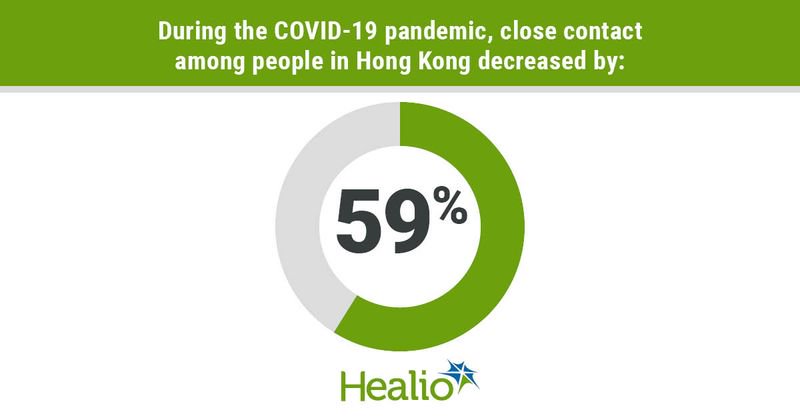Close contact in Hong Kong fell by more than 50% during pandemic
Throughout the COVID-19 pandemic, close contact among people in Hong Kong was reduced by 59%, according to mass transit and survey data published in Clinical Infectious Diseases.
In turn, there was a reduction in risk for COVID-19 or influenza of more than 47%, researchers reported.

“Many nonpharmaceutical interventions, which aim to encourage social distancing and reduce the exposure time and the risk of infection during close contact, have been implemented for infection prevention and control,” Yuguo Li, PhD, professor of building environment and honorary professor of public health at the University of Hong Kong, and colleagues wrote. “Human behavior change is crucial to prevent transmission in the absence of pharmaceutical interventions. However, data on the relevant human behaviors are lacking.”
Li and colleagues examined COVID-19 case data and influenza surveillance information in Hong Kong and used mass transit railway data and a telephone survey to analyze changes in human behavior. They used a SEIR (susceptible, exposed, infected, recovered) model to determine the effect of influenza transmission caused by pandemic-related behavioral changes.
Throughout the pandemic, the amount of transit passengers decreased by 52% in comparison to the same time period in 2019. Analysis showed that Hong Kong residents spent 32.2% more time at home during the pandemic, while students, workers and the elderly reduced their amount of daily close contacts by 83%, 48.1% and 40.2%, respectively.
The amount of close contact in residences, workplaces, places of study, restaurants, shopping centers, markets and public transit dropped by 8.3%, 30.8%, 66%, 38.5%, 48.6%, 41% and 36.1%, respectively. Overall changes in human behaviors during the pandemic were found to reduce the reproduction number of influenza in the population by 63.1%.
According to the researchers, the study’s limitations included a lack of inclusion of long-range airborne and distant fomite disease transmission routes and the inability to identify a specific human behavior that had the most significant association with infection spread.
“Our surveys of population behaviors could have been affected by response bias, because we relied on self-reported data,” the authors wrote. “Devices designed to detect close contacts should be adopted to fulfill the accurate data requirements of future studies.”

